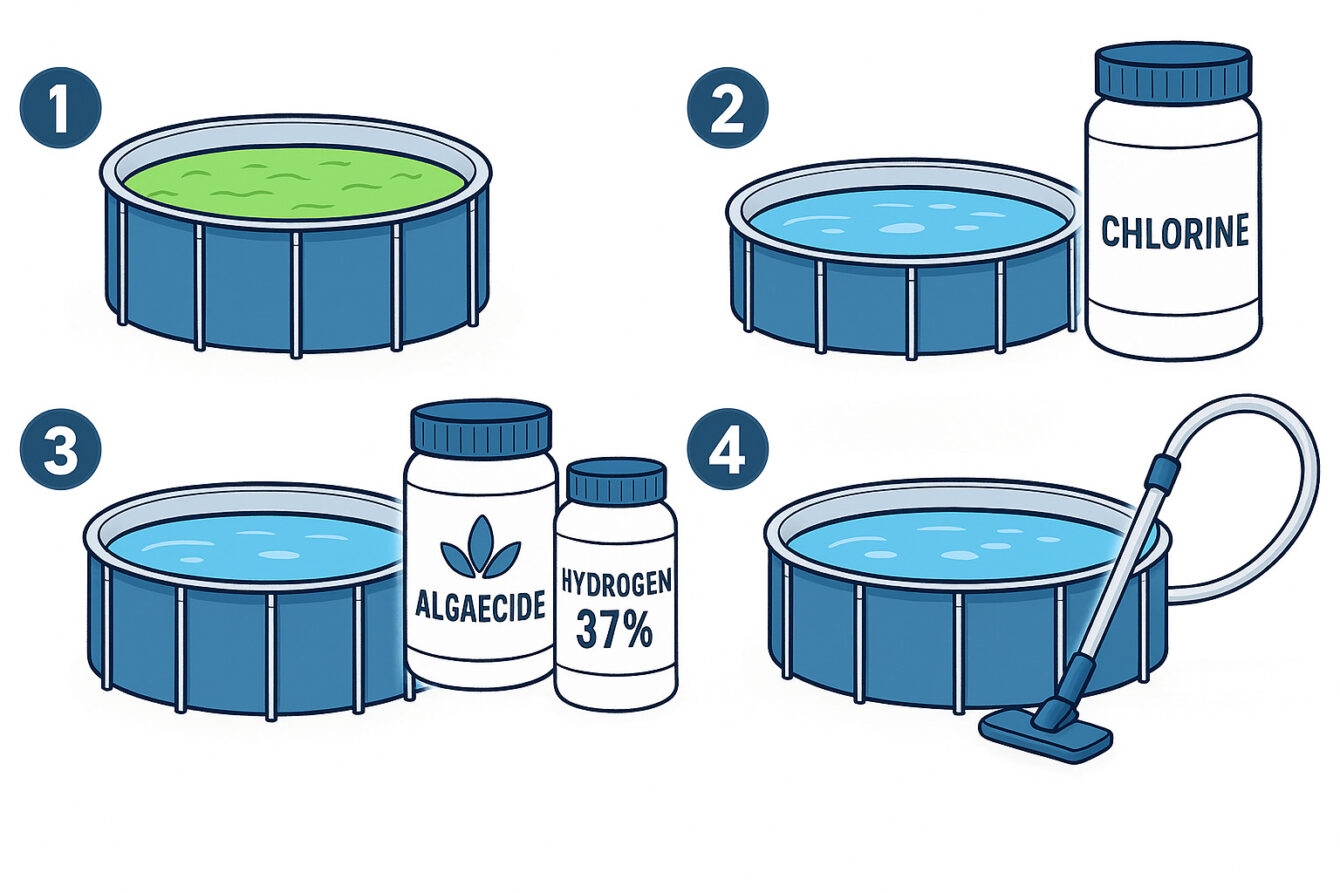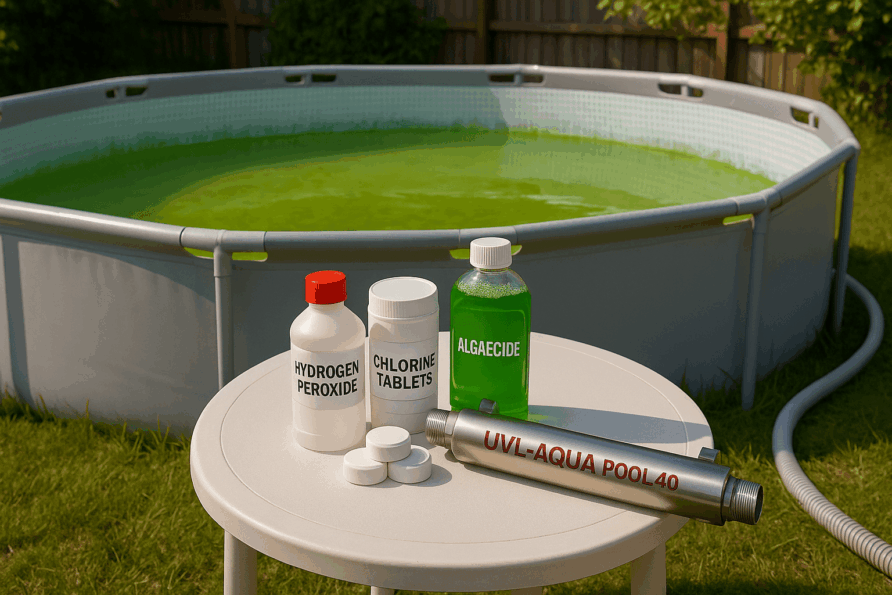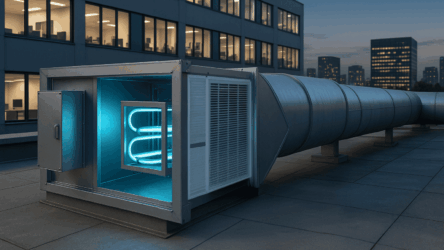During hot summer days, many owners of frame or above-ground pools encounter a common problem — green or murky water. The pool loses its clarity, slippery algae form on the walls, and swimming becomes both unpleasant and unsafe. In this article, we explain the main causes of this issue and provide step-by-step recommendations for restoring your pool water to a clean and clear state.
Why Does Pool Water Turn Green or Cloudy?
Green or cloudy water is usually caused by the uncontrolled growth of algae, bacteria, and other microorganisms. The most frequent reasons include:
- Poor filtration or a clogged filter
When water circulation is weak, organic waste builds up — skin cells, dust, dirt, leaves, and hair all serve as a breeding ground for harmful microbes. - Lack of regular chemical disinfection
If chlorine, algaecide, or other sanitizers are not used consistently, microorganisms flourish rapidly. - Prolonged heat and sunlight
High temperatures and intense UV exposure create ideal conditions for algae blooms and bacterial growth.
What to Do If the Water Has Already Turned Green
If your pool water is visibly green, here’s a proven recovery plan:
- Shock the pool with chlorine
Add chlorine granules or tablets to reach 0.3–0.6 mg/L of free chlorine. This kills most bacteria and viruses quickly. - Apply algaecide
Immediately after chlorination, add an appropriate dose of algaecide to stop algae growth and break down their cell structures. Always follow the dosage instructions carefully. - Alternatively, use hydrogen peroxide (37%)
Hydrogen peroxide is a powerful disinfectant that doesn’t affect pH levels, making it an excellent chemical for sensitive pool setups. However, if the algae bloom is severe, hydrogen peroxide alone might not be enough. - Clean the pool walls and bottom thoroughly
After treatment, dead algae and debris will settle as sediment. Use a water vacuum to remove these particles for a crystal-clear result.

If the Contamination Is Too Severe: Start Fresh
In extreme cases, it’s best to fully drain and reset your pool:
- Drain all the water
- Scrub walls and bottom
- Apply a surface disinfectant
- Clean or replace the filter
- Refill the pool and perform shock chlorination
Prevention: How to Avoid Green Water in the First Place
To prevent your pool from turning green again, consistent maintenance is key. According to chemical treatment experts:
“Effective sanitation depends on the regular use of disinfectants, pH balancers, and anti-algae agents. Today, many pool owners rely on multi-functional tablets (3-in-1 or 5-in-1) that include chlorine, algaecide, and coagulants. The right chemical blend depends on water quality and how heavily the pool is used.”
Additionally, we recommend:
- Servicing your filter regularly — whether it's a sand or cartridge filter, ensure it’s functioning properly.
- Using ultraviolet disinfection
Modern UV sterilizers offer a chemical-free method to kill up to 99.9% of pathogens. Even with a basic filter, installing a UV disinfection lamp can dramatically improve water quality. For frame pools between 4 and 20 cubic meters, we recommend models like UVL-AQUA POOL 15 to UVL-AQUA POOL 40.
Important: For UV to be effective, the water must have a light transmittance of at least 85%. If it's lower, the UV dose may fall short of the required 25 mJ/cm², making disinfection unreliable.
Conclusion
Green or cloudy pool water might look alarming, but it’s entirely fixable. With the right combination of chlorine, algaecide, or hydrogen peroxide, followed by thorough cleaning and UV water disinfection, your pool can be restored in no time. To prevent future issues, invest in a proper filtration system, apply the right reagents, and consider adding a UV lamp for swimming pool for safe, clear water all season long.







